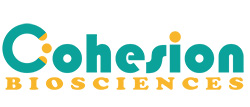Description: Incomplete Freund's Adjuvant Form: Clear liquid Directions for Use : 1. Mix antigens (preferably in saline) with an equal volume to half volume of the adjuvant to form an emulsion. In order to do this, vigorous and prolonged mixing is needed. There are at least three methods which can be used to accomplish this:
For small volumes the emulsion can be made in a tube. Pipet the adjuvant in the tube first. Then, while vortexing, add an equal volume of the antigen solution. Vortex vigorously until a thick emulsion forms.
For intermediate volumes, use two syringes connected through a luer fitting. Ideally, a 3-way valve should be used. Take the desired amount of antigen solution into a glass syringe. The volume should not fill more than half the syringe. Take an equal volume of the adjuvant into another glass syringe. Remove all air and connect the syringes through the luer fitting to the 3-way valve. Adjust the 3-way valve such that the connection is open between the two syringes. Carefully depress the plunger from the antigen solution first, pushing the antigen into the oil of the adjuvant. Alternately push the plungers, mixing the adjuvant and the antigen solution into an emulsion. Continue until the plungers are difficult to push.
For large volumes, use a tissue homogenizer to make the emulsion. Add the adjuvant to the homogenizer first. Run the homogenizer for a short time to coat the inside with the adjuvant. Add an equal volume of the antigen solution and run until a thick emulsion forms.
2. The resulting emulsion should be very thick and a drop of it should not disperse if tested by placing on the surface of a saline solution.
3. Transfer the emulsion to a syringe (or remove one syringe from the luer fitting if using the two-syringe method). Remove all the air. Add an appropriately sized needle. The samples are now ready for injection.Components : Each ml contains 0.85 ml of paraffin oil and 0.15 ml of mannide monooleate.Application : Freund's Adjuvant is one of the most commonly used adjuvants in research. It is used as a water-in-oil emulsion. It is prepared from non-metabolizable oils (paraffin oil and mannide monooleate). Without the bacteria it is Incomplete Freund's Adjuvant. Freund's Adjuvant is designed to provide continuous release of antigens necessary for stimulating a strong, persistent immune response. The main disadvantage of Freund's Adjuvant is that it can cause granulomas, inflammation at the inoculation site and lesions. To minimize side-effects, Incomplete Freund's Adjuvant is used for the boosts.Storage/Stability : Store at 4°C for one year. Do not freeze.

 Incomplete Freund's Adjuvant
Incomplete Freund's Adjuvant  Datasheet
Datasheet MSDS
MSDS